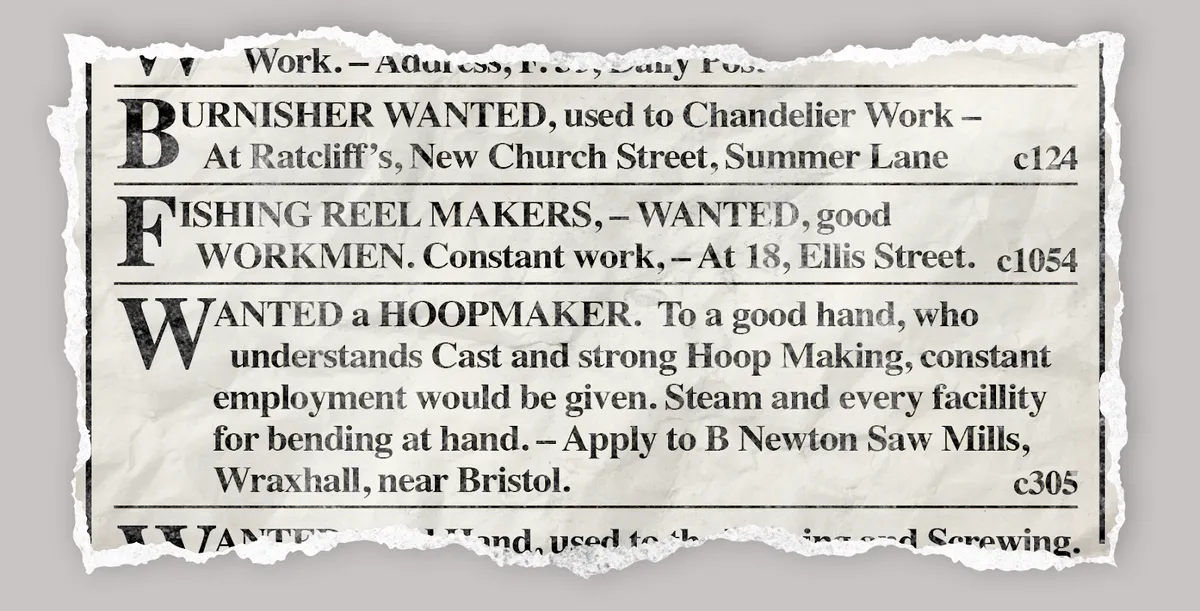The most common jobs advertised in 1870 were milliners, dressmakers and tailors, according to new research.
Researchers from CV building company Resume.io compared local newspaper job adverts from 1870, 1920 and 1970 with online job adverts in 2020 to discover how work has changed over time.
They found that in 1870, many of the job adverts our ancestors would have read were for positions that no longer exist.
As well as milliner (a hatmaker), they might have sought employment as a billiard room attendant, wig consultant or whalebone rosette maker.
Menno Olsthoorn, CEO of Resume.io, said: “Navigating the employment pages of newspapers from 150 years ago is like entering another world.
“I don’t think I would last long as a chandelier burnisher or a wig consultant, but I guess that modern titles like ethical hacker, chief cloud developer or scrum master would be equally as alien to a job-seeker from 1870.”

The biggest section of the jobs market in 1870 was construction and skilled trades, which made up 36% of advertised jobs, including positions such as mortice lock maker, French polisher and venetian blind painter.
The proportion of jobs in this sector fell to 17% by 1920, 11% by 1970 and made up just 7% of the economy in 2020.
Similarly, the importance of the domestic help sector has fallen dramatically.
A quarter of advertised roles (25%) were for housekeepers, nannies, household cooks and servants in 1870, rising to a third (35%) in 1920.
However, changes in society following the Second World War saw this proportion plummet to 6% in 1970 and make up only 1% of roles in current times.
In contrast, the biggest area of growth was in education and teaching jobs.
These were just 1% of the advertised positions in 1870 and 1920 and 2% in 1970, but 10% in 2020.
The job adverts show that children in 1870 were expected to leave school at a young age and find work.
Many seek boys aged 13 or 14 for office work.
One advert in the Birmingham Daily Post reads: “Office boy wanted, 13 years old. Must read and write well. – Apply, Builder’s Trade Circular, 19, Temple Street.”
The adverts also reflect a male-dominated workplace, with many specifying that a ‘Young man’ was sought for the job.
You can find out what job you would have had in 1870, 1920 or 1970 by entering your age, gender and level of education on the free Employment History tool on Resume.io’s website.
Rosemary Collins is the staff writer of Who Do You Think You Are? Magazine
